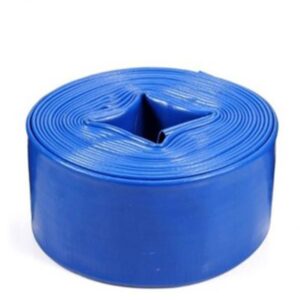The recommended pressure and flow rates for efficient operation of a drip hose can vary depending on the specific type and design of the hose, as well as the requirements of the irrigation system and the plants being watered.
However, here are some general guidelines:
- Pressure: Drip hoses typically operate efficiently at low pressure. The ideal pressure for most drip hoses ranges between 10 to 30 pounds per square inch (psi). Higher pressures can cause excessive water flow, leading to possible leaks, bursts, or inconsistent watering.
- Flow Rates: The flow rate of a drip hose varies based on its emitter spacing, diameter, and design. Flow rates for drip hoses can range from 0.5 to 2 gallons per hour (GPH) per emitter. This flow rate is commonly distributed across the entire length of the hose.
- Considerations for Specific Plants: Different plants have varying water needs. Some may require higher or lower flow rates. Adjustments can be made by selecting specific drip hoses with different flow rates or by using flow control valves to regulate the water flow for different plant types.
- Soil Type and Conditions: Soil type and moisture retention properties can influence the pressure and flow rates needed. In denser soils, lower flow rates might be more effective to ensure proper water penetration without runoff.
- Elevation Changes: If the irrigation system involves elevation changes, pressure variations might occur. Pressure compensating drip hoses can help maintain consistent flow rates even in areas with varying elevations.
- Manufacturer Recommendations: It’s crucial to refer to the manufacturer’s specifications and guidelines for the specific drip hose being used. Manufacturers often provide recommended pressure and flow rate ranges for optimal performance.
Maintaining the recommended pressure and flow rates is essential for the efficient operation of drip hoses. Too much pressure can lead to excessive water usage, while insufficient pressure might result in inadequate water distribution. drip hose Monitoring and adjusting these factors according to the specific needs of the plants and the irrigation system can optimize the efficiency and effectiveness of drip hose usage.
Can you share any user feedback or testimonials regarding the functionality and effectiveness of drip hoses in irrigation systems or gardens?
I don’t have access to real-time user feedback or testimonials, but I can share some common sentiments and experiences that users often express regarding drip hoses in irrigation systems or gardens:
- Water Efficiency: Users frequently praise drip hoses for their water efficiency. They often highlight how drip irrigation systems, facilitated by these hoses, significantly reduce water wastage compared to other irrigation methods, such as sprinklers.
- Improved Plant Health: Many users report better plant health and growth with drip hoses. The precise and targeted watering provided by drip irrigation helps deliver water directly to the roots, reducing evaporation and minimizing disease risks associated with overhead watering.
- Time-Saving: Drip hoses are often celebrated for their convenience and time-saving benefits. Once installed, they provide consistent and automated watering, reducing the need for manual watering and allowing users to focus on other gardening tasks.
- Adaptability and Customization: Users appreciate the adaptability of drip hoses, as they can be customized to suit various garden layouts, plant types, and soil conditions. Adjustable flow rates and emitter spacing allow for tailored irrigation.
- Reduction in Weeds: Drip irrigation systems with drip hoses are known to help minimize weed growth since water is delivered precisely to plant roots, reducing moisture in areas where weeds might otherwise thrive.
- Environmental Benefits: Some users appreciate the environmental advantages of drip hoses, noting their contribution to water conservation and sustainability by efficiently using water resources.
These sentiments often highlight the overall satisfaction and positive experiences users have had with drip hoses in maintaining healthy gardens, conserving water, and simplifying their irrigation practices. For specific and detailed testimonials or user reviews, it’s recommended to explore gardening forums, product review websites, or manufacturer websites where users share their firsthand experiences with drip hoses.
